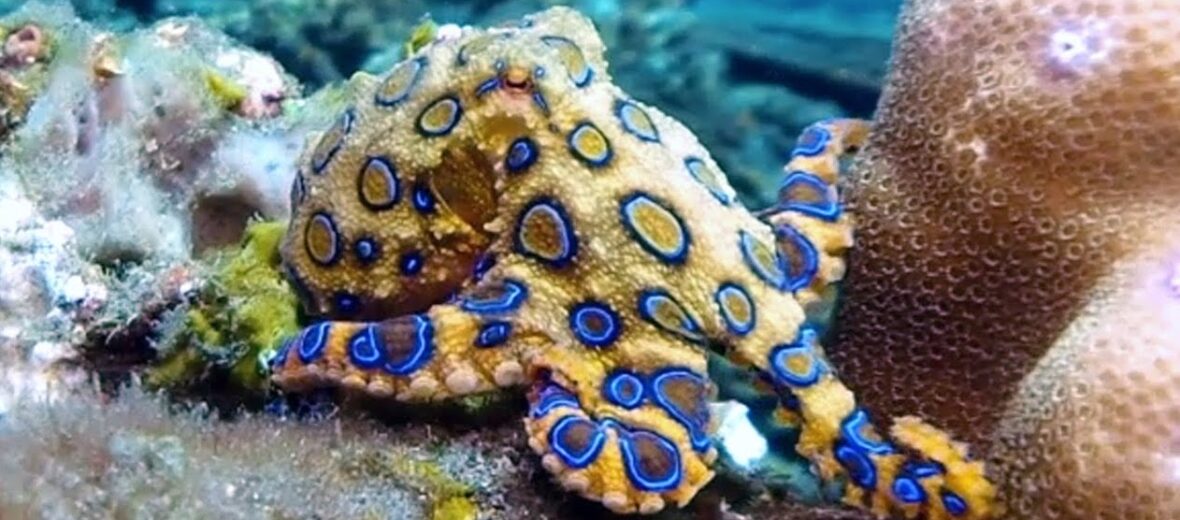
The southern blue-ringed octopus is one of 3 highly venomous species of blue-ringed octopuses. It is most commonly found in tidal pools along the southern coast of Australia. Naturally, like many things in Australia, it is capable of killing you. Its method is by paralysis, using tetrodotoxin. The tetrodotoxin produced by the blue-ringed octopus is so powerful that a single bite packs enough venom to kill up to 26 people in minutes!
First the Stats…
Scientific name: Hapalochlaena maculosa
Weight: Up to 1 ounce
Length: Up to 8 inches
Lifespan: Up to 2 years
Now on to the Facts!
1.) The known types of blue-ringed octopuses are: Greater blue-ringed (Hapalochlaena lunulata), Southern blue-ringed or lesser blue-ringed (Hapalochlaena maculosa), and the Blue-lined (Hapalochlaena fasciata).
2.) Their prey is typically small crabs and shrimp, as well as slower moving and sick fish.
3.) As of 2018, there is no blue-ringed octopus antivenom available. So, if you get bitten, your chance of death is pretty much 100% without CPR or life support, for around 24 hours!
4.) This octopus produces venom containing tetrodotoxin, histamine, tryptamine, octopamine, taurine, acetylcholine and dopamine. The venom can result in nausea, respiratory arrest, heart failure, severe and sometimes total paralysis, blindness, and can lead to death within minutes if not treated. Death, if it occurs, is usually from suffocation due to paralysis of the diaphragm.
5.) Their range has been recorded to be all over Australia, New Guinea, Indonesia, Philippines, Malaysia, and even Japan. They are found in rubble or reefs, cracks, small stones, on top of reefs, and along sandy bottoms.
But wait, there’s more on the blue-ringed octopus!
6.) Generally, this octopus is docile and not likely to bite, unless provoked.
7.) Blue-ringed octopuses are a deep brown to gold until antagonized then they flash their trademark bright iridescent blue rings as a warning response to perceived danger.
Did you know…?
Tetrodotoxin can be 1,200 times more toxic than cyanide!
8.) Both the male and female die during the reproductive process. The male dies right after the couple mates. The female will lay between 50 – 100 eggs then guard them till she dies. Death comes from not eating through the entire gestation period, which lasts from 1 – 2 months, then dying from starvation.
9.) These critters are nocturnal (active at night).
10.) They get their venom from the bacteria they ingest.
Now a Short Blue-Ringed Octopus Video!
Also, check out the Critter Science YouTube channel. Videos added frequently!
Want to suggest a critter for me to write about? Let me know here.



